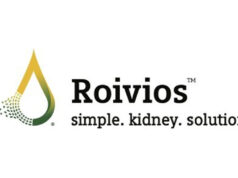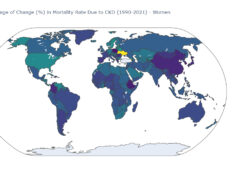 In a new study looking at the long-term effects of hospitalised patients who have acute kidney injury (AKI), Johns Hopkins Medicine (Baltimore, USA) researchers found that higher levels of certain biomarkers in urine and blood can predict a patient’s risk of developing chronic kidney disease (CKD).
In a new study looking at the long-term effects of hospitalised patients who have acute kidney injury (AKI), Johns Hopkins Medicine (Baltimore, USA) researchers found that higher levels of certain biomarkers in urine and blood can predict a patient’s risk of developing chronic kidney disease (CKD).
The findings, published on March 23, in the Journal of Clinical Investigation, could help doctors better understand whether or not the body is healing properly, after someone sustains kidney damage, and potentially prevent the progression of AKI to CKD.
“About 20% of hospitalised patients develop AKI and have a three- to eight-fold increased risk of developing CKD later on in life,” says Chirag Parikh (Johns Hopkins University School of Medicine, Baltimore, USA) and the study’s corresponding author. “AKI incidence in the hospital continues to rise, so we set out to understand how and why AKI progresses to CKD, and if monitoring these patients over time can give us clues to kidney disease progression.”
In a cohort of 656 hospitalised patients with AKI, researchers measured seven urine and two plasma biomarkers of kidney injury, inflammation and tubular health at multiple timepoints over the course of a year after diagnosis. The goal was to determine the associations of longitudinal changes in these biomarkers with progression of kidney disease after AKI. The researchers found that for each deviation increase in change of the biomarker KIM-1, MCP-1 in urine and TNFRI in plasma from baseline to 12 months was associated with a two- to three-fold increased risk for CKD.
Parikh says these findings suggest that sustained tissue injury and inflammation, as well as slower restoration of tubular health, are associated with higher risk of kidney disease progression. However, they also observed that the increase in the urine biomarker UMOD was associated with a 40% reduced risk for CKD.
“Longitudinal measurement of some of these proteins have the potential to guide management of patients with AKI after discharge, which includes follow-up with a nephrologist; optimising diabetes and cardiac medications; and accurate dosing of all medications with reduced kidney function,” says Parikh. He underscores the need for more research into these ongoing biological processes to help better understand the transition from AKI to CKD.











